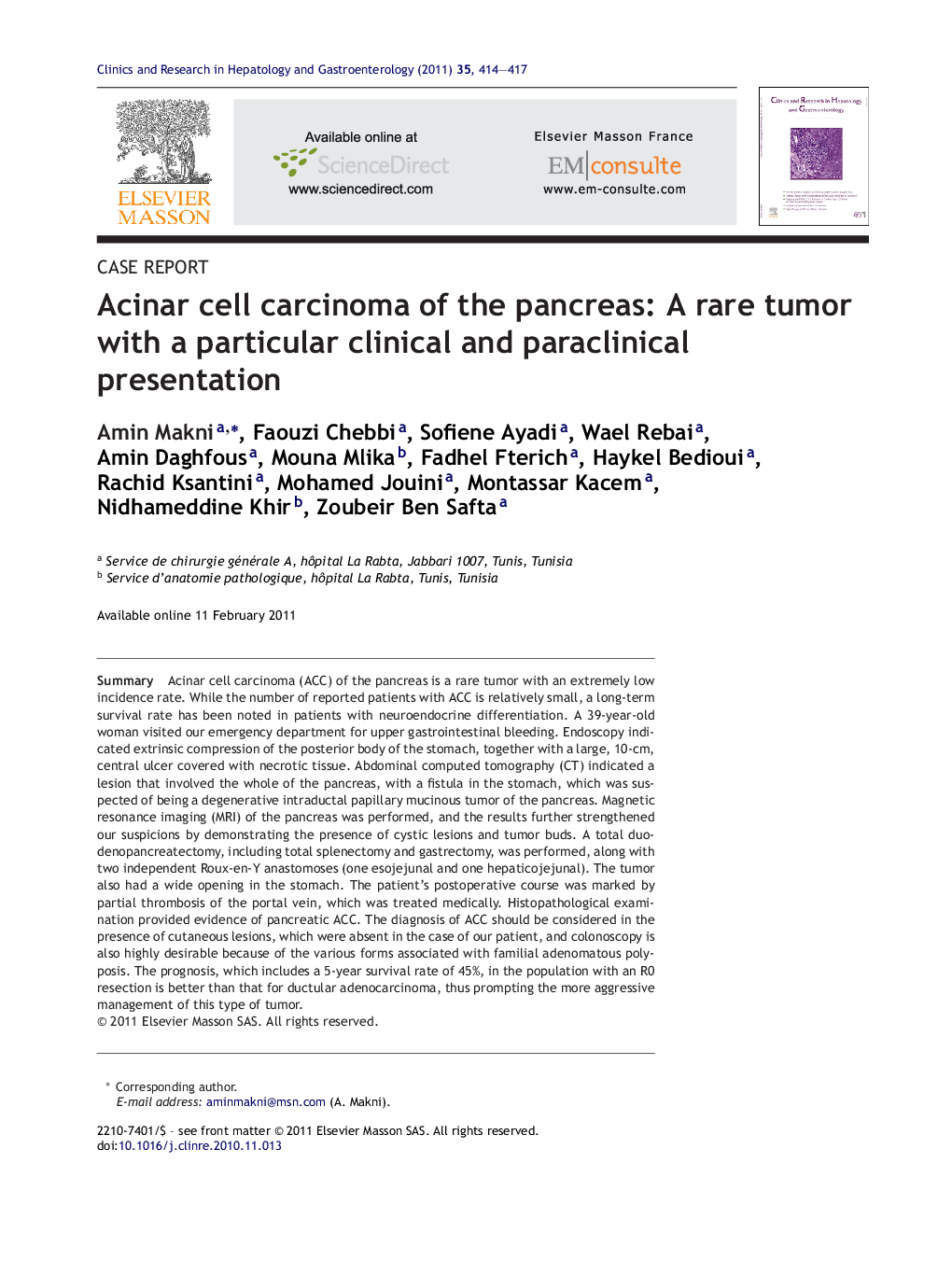| Article ID | Journal | Published Year | Pages | File Type |
|---|---|---|---|---|
| 3286554 | Clinics and Research in Hepatology and Gastroenterology | 2011 | 4 Pages |
SummaryAcinar cell carcinoma (ACC) of the pancreas is a rare tumor with an extremely low incidence rate. While the number of reported patients with ACC is relatively small, a long-term survival rate has been noted in patients with neuroendocrine differentiation. A 39-year-old woman visited our emergency department for upper gastrointestinal bleeding. Endoscopy indicated extrinsic compression of the posterior body of the stomach, together with a large, 10-cm, central ulcer covered with necrotic tissue. Abdominal computed tomography (CT) indicated a lesion that involved the whole of the pancreas, with a fistula in the stomach, which was suspected of being a degenerative intraductal papillary mucinous tumor of the pancreas. Magnetic resonance imaging (MRI) of the pancreas was performed, and the results further strengthened our suspicions by demonstrating the presence of cystic lesions and tumor buds. A total duodenopancreatectomy, including total splenectomy and gastrectomy, was performed, along with two independent Roux-en-Y anastomoses (one esojejunal and one hepaticojejunal). The tumor also had a wide opening in the stomach. The patient's postoperative course was marked by partial thrombosis of the portal vein, which was treated medically. Histopathological examination provided evidence of pancreatic ACC. The diagnosis of ACC should be considered in the presence of cutaneous lesions, which were absent in the case of our patient, and colonoscopy is also highly desirable because of the various forms associated with familial adenomatous polyposis. The prognosis, which includes a 5-year survival rate of 45%, in the population with an R0 resection is better than that for ductular adenocarcinoma, thus prompting the more aggressive management of this type of tumor.
